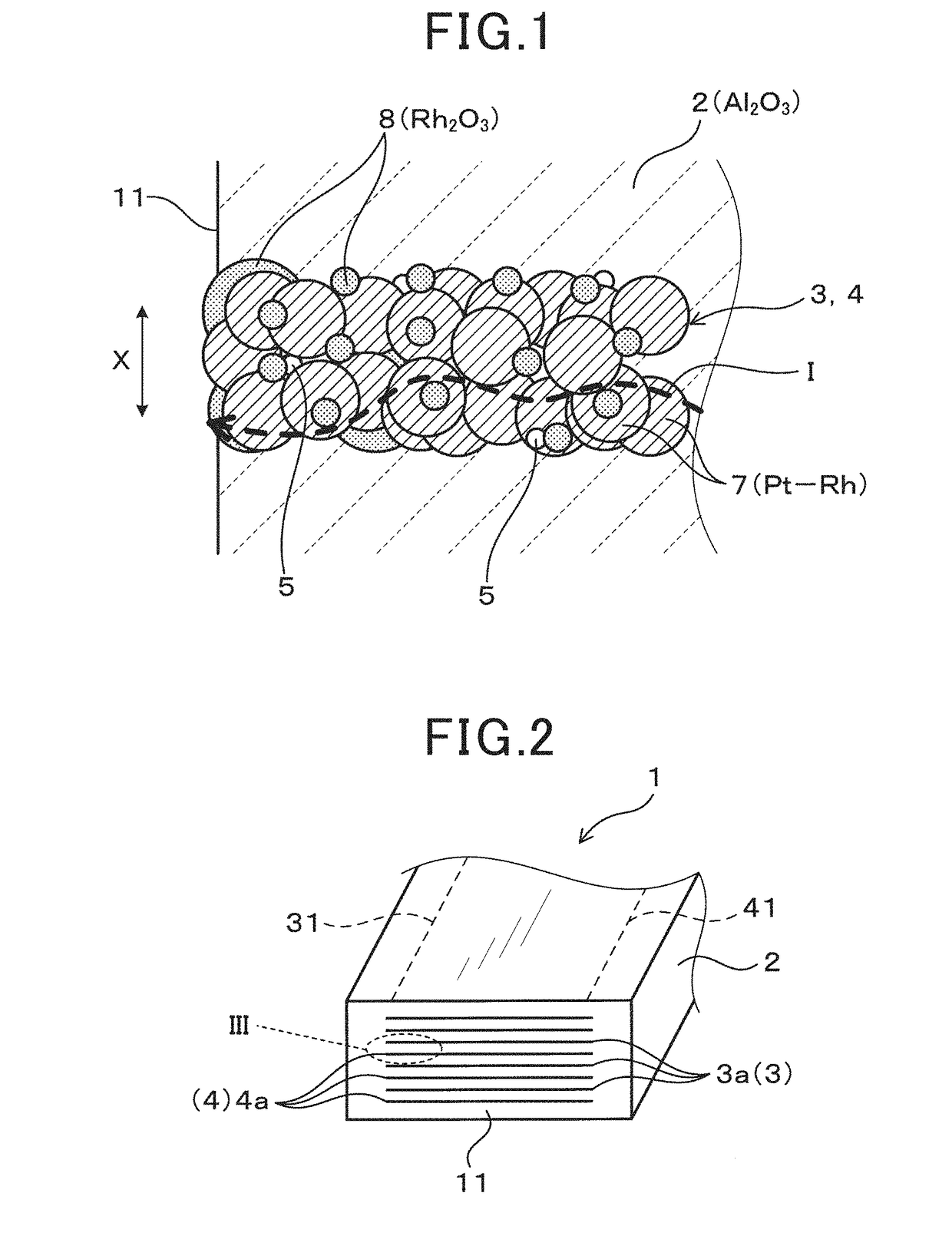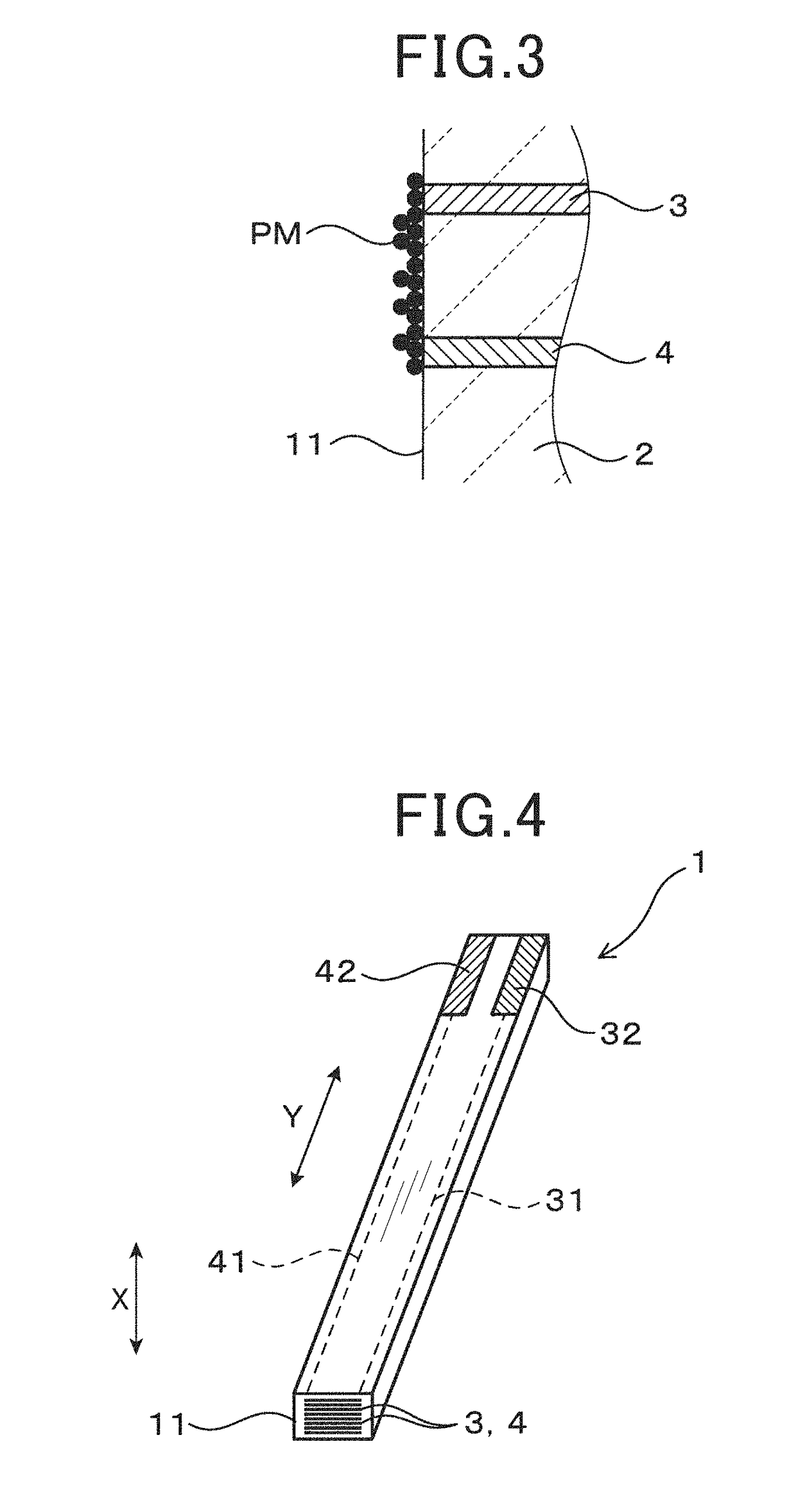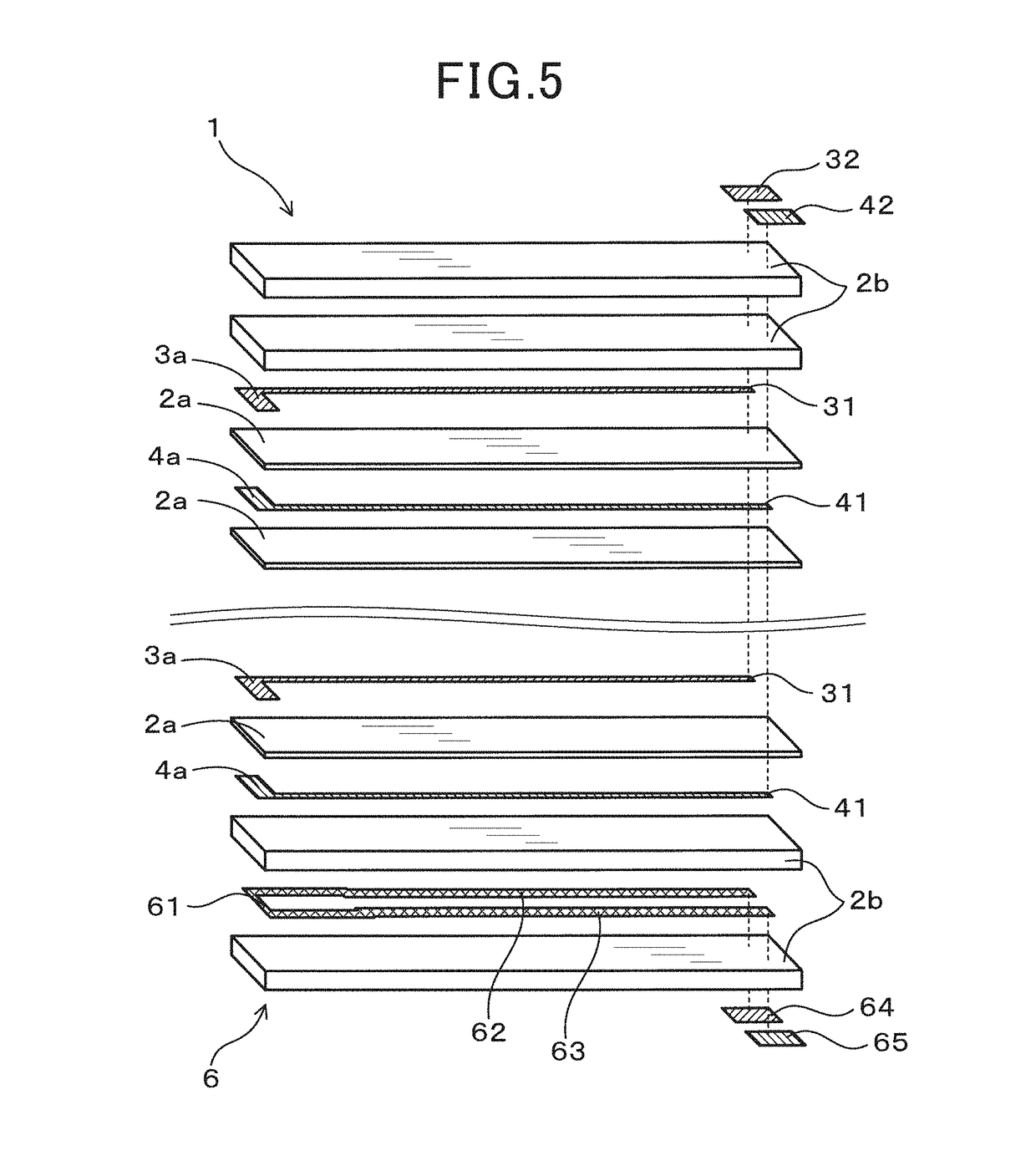Sensor element
a technology of sensor elements and electrodes, applied in the field of electrodes, can solve the problems of oxidizing pt to pto/sub>2, reducing the electrode resistance, etc., and reducing the distance between the electrodes. , the effect of increasing the electrode resistan
- Summary
- Abstract
- Description
- Claims
- Application Information
AI Technical Summary
Benefits of technology
Problems solved by technology
Method used
Image
Examples
first embodiment
[0040]Next, embodiments of an electrode for a sensor element and a sensor element using the same will be described with reference to the drawings. As shown in FIGS. 1 to 5, this embodiment is an example of application to a particulate matter detection sensor including a laminated type sensor element 1. The particulate matter detection sensor is installed, for example, in the exhaust passage of an internal combustion engine to constitute a part of an exhaust post-treatment device. The sensor element 1 can detect particulate matter (hereinafter referred to as PM) as a specific substance contained in the gas to be measured. The gas to be measured is, for example, a combustion exhaust gas discharged from an internal combustion engine containing micro PM including conductive soot and the like.
[0041]As shown in FIGS. 1 to 3, one end face of an insulating substrate 2 of the sensor element 1 serves as a detection face 11. On the detection surface 11, parts of pairing detection electrodes 3,...
second embodiment
[0063]In the first embodiment, one end face of the laminated type sensor element 1 serves as the detection face 11. In addition, the sensor element 1 has a laminated type electrode structure in which electrode films of the plurality of detection electrodes 3 and 4 are embedded in the insulating substrate 2 like layers. A part of the plurality of pairing detection electrodes 3 and 4 is referred to as a first group and the remaining plurality of pairing detection electrodes 3 and 4 are referred to as a second group. As shown in FIGS. 8 to 10 as the second embodiment, in the sensor element 1, it can also be a printed type electrode structure in which the first group is printed on the surface that is going to be the detection face 11 of the insulating substrate 2, and the second group is embedded. The basic configuration of the sensor element 1 is the same as that of the first embodiment, and mainly the differences from the first embodiment will be described below.
[0064]In this embodime...
experimental example 1
[0070]Next, the sensor element 1 of the first embodiment was fabricated by the method described above, and the variation in the electrode resistance of the detection electrodes 3, 4 was examined by a durability test. For the detection electrodes 3, 4, an electrode material was used. The electrode material was obtained by adding void forming particles made of resin beads to alloy particles 7 of a Pt—Rh alloy, an aggregate of alumina, and an electrode paste. The electrode paste is formed by mixing and kneading an organic solvent with an organic binder. The alloy particles 7 were prepared by mixing an acid solution containing Pt ions and Rh ions, and causing a reduction reaction with a reduction agent. At this time, the amounts of Pt ions and Rh ions were adjusted to vary the percentage by mass of Pt and Rh in the range of Pt: 98 mass % to 69 mass %, Rh: 2 mass % to 31 mass %. This is the ratio on the assumption that the total amount of Pt and Rh is 100 mass %.
[0071]Further, the amount...
PUM
| Property | Measurement | Unit |
|---|---|---|
| particle diameter | aaaaa | aaaaa |
| softening temperature | aaaaa | aaaaa |
| temperature | aaaaa | aaaaa |
Abstract
Description
Claims
Application Information
 Login to View More
Login to View More - R&D
- Intellectual Property
- Life Sciences
- Materials
- Tech Scout
- Unparalleled Data Quality
- Higher Quality Content
- 60% Fewer Hallucinations
Browse by: Latest US Patents, China's latest patents, Technical Efficacy Thesaurus, Application Domain, Technology Topic, Popular Technical Reports.
© 2025 PatSnap. All rights reserved.Legal|Privacy policy|Modern Slavery Act Transparency Statement|Sitemap|About US| Contact US: help@patsnap.com



